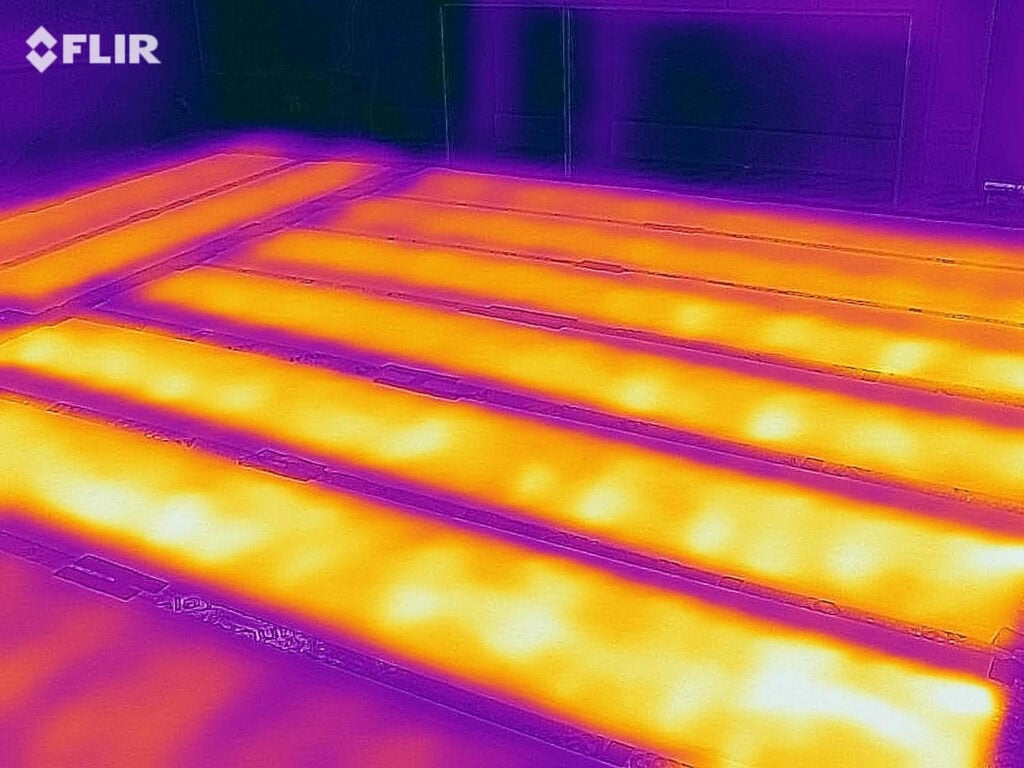Simple and efficient underfloor heating system

Problem Addressed
Carbon emissions from heating buildings. It is no secret that the way we heat buildings must change. With the UK Government committed to “net zero” greenhouse gases by 2050 , its Heat and Buildings Strategy (published on 19th October 2021) sets out plans to significantly cut emissions from the UK’s 30 million homes and workplaces. Whilst a lot of the plan centres around residential properties, it also sets out objectives for decarbonising commercial buildings including minimum efficiency standards and performance-based energy ratings. One of the key drivers in achieving these ambitious targets is the move to alternative heating systems, namely, very high efficiency electrical heating and heat pumps. Underfloor heating is the ideal partner to heat pumps, as it can operate at lower temperatures than boilers and radiators, yet still provide comfortable heat. However, the traditional systems that incorporate water pipes or electric mats can be problematic to install and remediate, especially for commercial applications.
Case Study
- Gold Award in the National Flooring Innovation Awards in the Environmental category.
- Featured in Barratt Homes’ “Z House Project”, a zero carbon prototype home at Salford University.
- Included in leading modular homes provider Project Etopia’s demo home showcasing best-in-class sustainable technologies at BRE’s Innovation Park.
- Labelled by the Solar Impulse Foundation as one of their 1000 solutions protecting the environment in a financially profitable way.
- Described by Octopus Energy’s Future Technologies Evangelist as “a truly game changing piece of tech” “a ground-breaking new way to heat a building without burning gas”
- Customer feedback examples:
– “As a flooring contractor, we were surprised how quick and easy install was with no screed needed, The heat is a constant even temperature” Flooring Contractor, School installation
– “We have estimated a saving over 50% compared with LPG. It’s also a nicer, even heat” Home owner replacing LPG Heating
– “It maintains a perfect ambient temperature, consistently and cost effectively. I have previously installed both wet and electric (coil) underfloor heating systems and this is a significant improvement over both.” Business, Construction
– “This product is brilliant. Quick and easy install. No mess, no self levelling or screed. Very impressed.” CDAB Builders.
– “The heat is much more pleasant, it feels like it’s heating you. It’s like a sauna with less heat and no sweating! We still at the moment have radiators in some rooms. The heat in the other rooms does not feel as welcoming or consistent. Some areas heated by radiators are warmer than others.” Home owner
Facts and Figures
This page presents data, evidence, and solutions that are provided by our partners and members and should therefore not be attributed to UKGBC. While we showcase these solutions for inspiration, to build consensus, and create momentum for climate action, UKGBC does not offer commercial endorsement of individual solutions. If you would like to quote something from this page, or more information, please contact our Communications team at media@ukgbc.org.
Related
Smart radiator control

Smart air bricks

The Retrofit Playbook

Community led approach to building affordable housing on micro-sites

